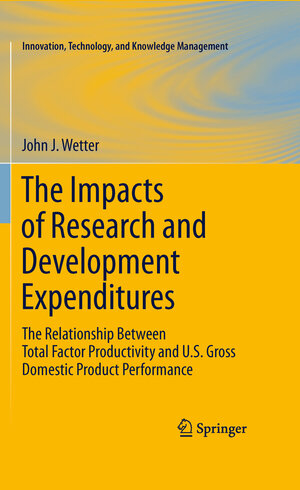
×
![Buchcover ISBN 9781441975294]()
The Impacts of Research and Development Expenditures
The Relationship Between Total Factor Productivity and U.S. Gross Domestic Product Performance
von John J. WetterThe research underlying this volume was designed to test the theory of Total Factor Productivity (TFP) in contemporary context. Developed by Nobel Prize-winning economist, Robert Solow, in the 1950s, TFP has been applied by many economists to investigate the relationships among capital, labor, and economic performance. In this analysis, John Wetter presents the hypothesis that technological investment drives growth and performance of the U. S. economy. The study addresses four key questions:
Synthesizing the literature from related fields, including macroeconomics, technology transfer, and innovation, and applying rigorous methodology, Wetter demonstrates that Total Factor Productivity is positively related to Gross Domestic Product and is mediated by Research & Development. In addition, he reveals that the lag time between R& D spending and GDP growth averages eleven years, which suggests that long-term planning is essential to maximizing the benefits of R& D. Wetter considers the implications for policymaking and industry leadership, including such timely issues as the effects of the 2009 U. S. stimulus program.
Synthesizing the literature from related fields, including macroeconomics, technology transfer, and innovation, and applying rigorous methodology, Wetter demonstrates that Total Factor Productivity is positively related to Gross Domestic Product and is mediated by Research & Development. In addition, he reveals that the lag time between R& D spending and GDP growth averages eleven years, which suggests that long-term planning is essential to maximizing the benefits of R& D. Wetter considers the implications for policymaking and industry leadership, including such timely issues as the effects of the 2009 U. S. stimulus program.




